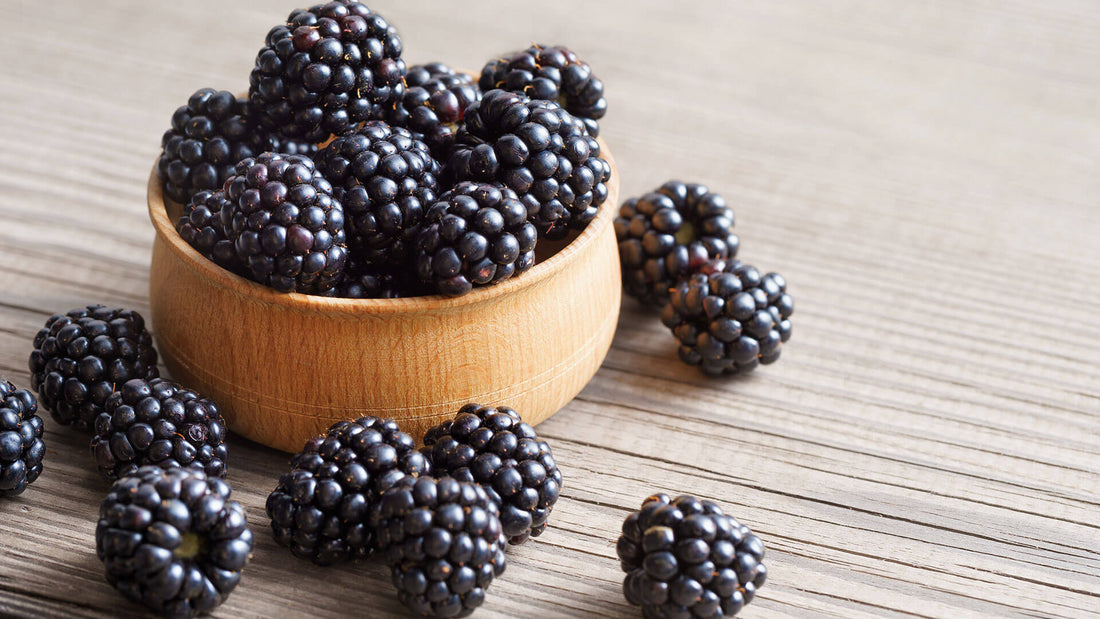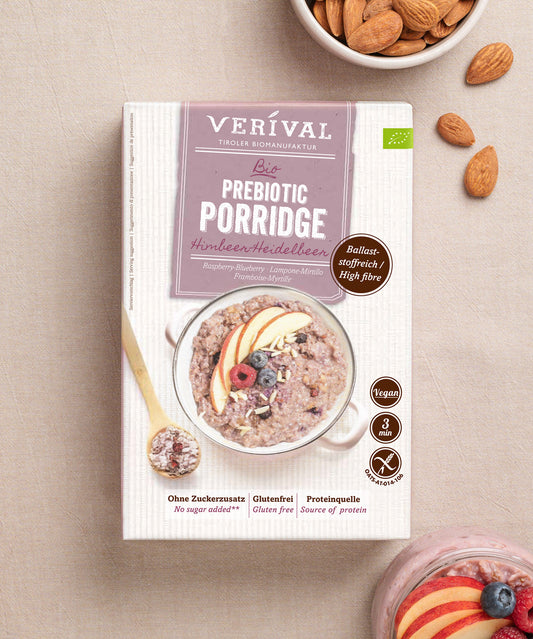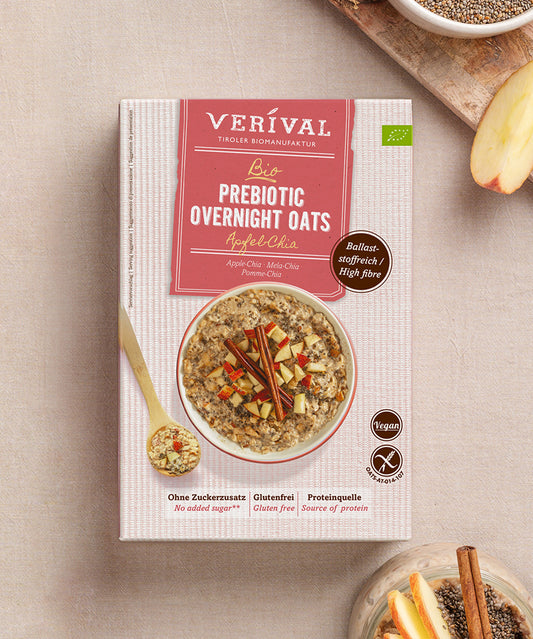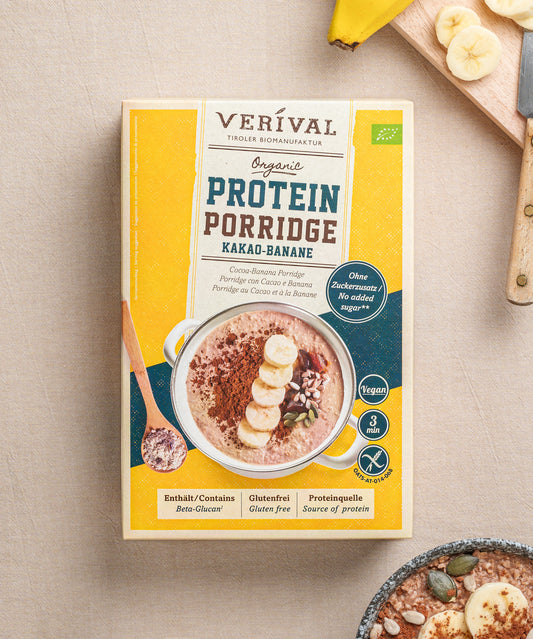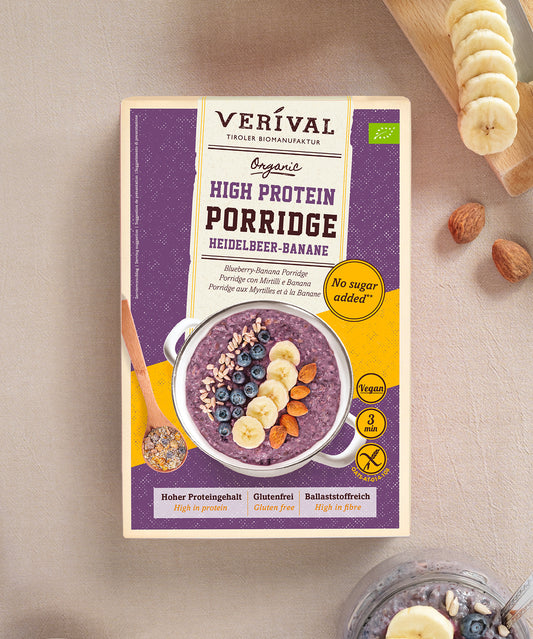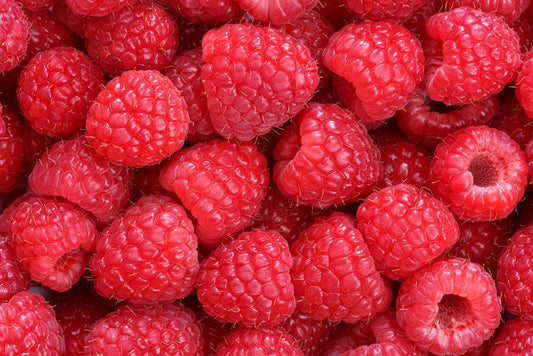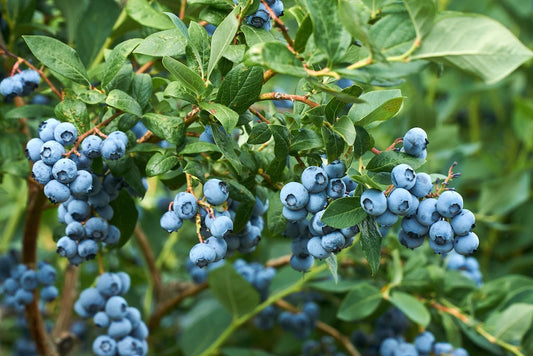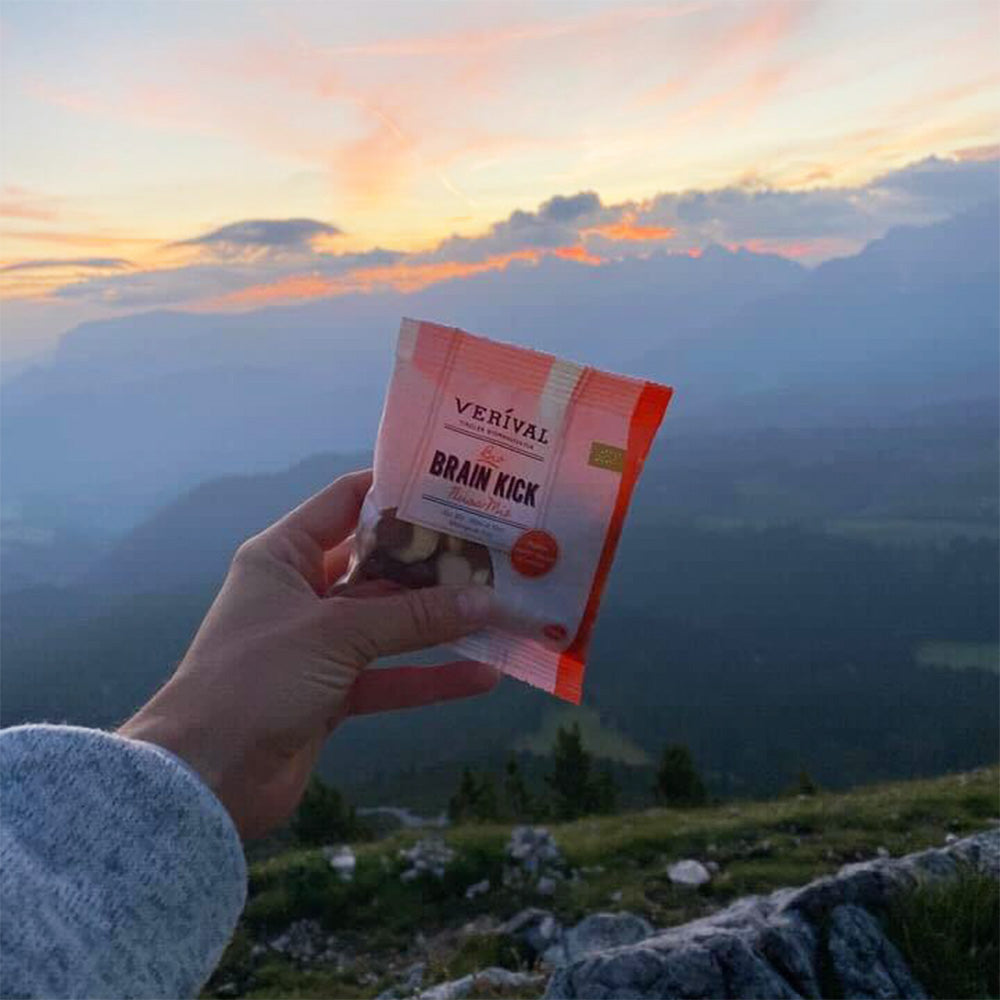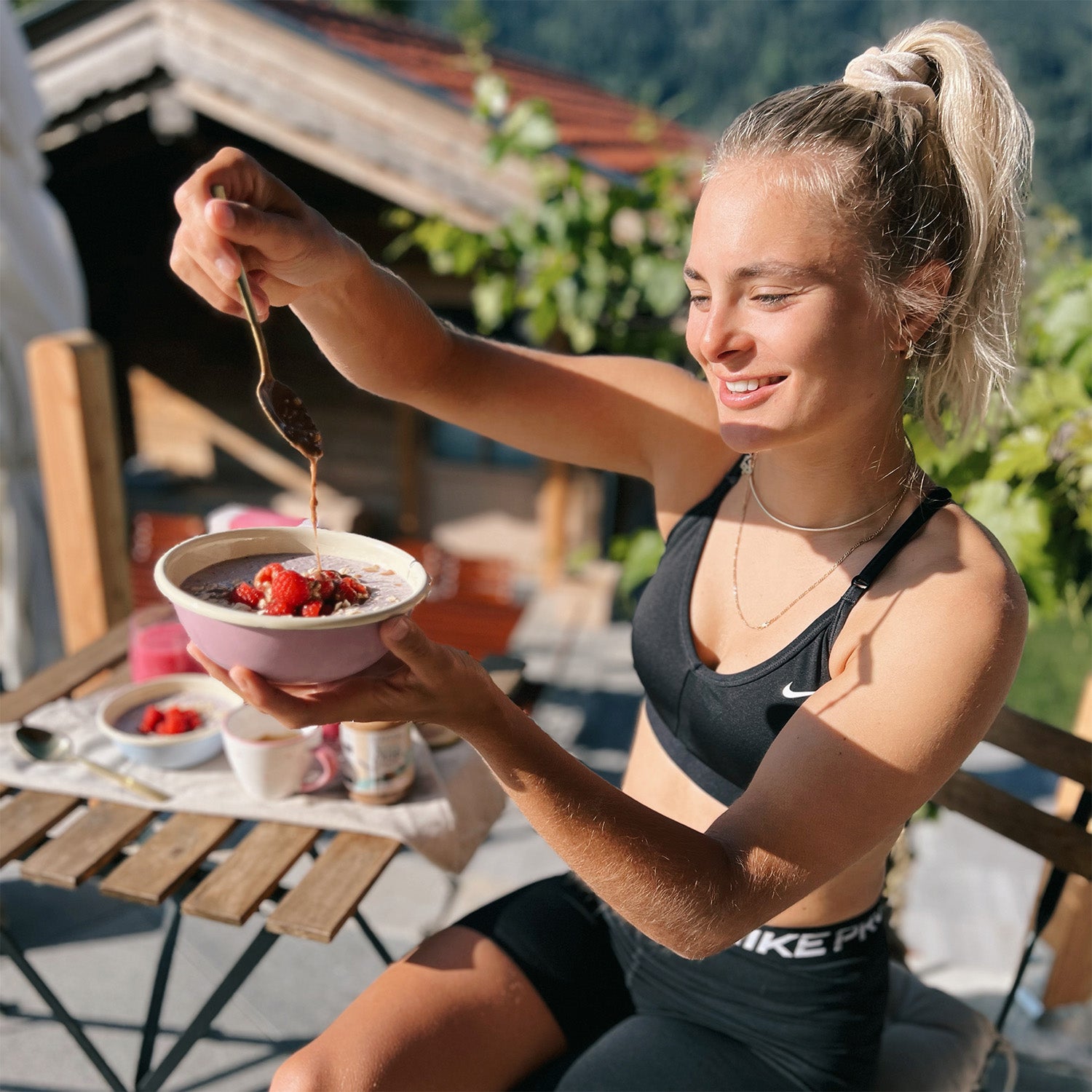Blackberries are certainly among the most popular fruits, along with fruits such as currants, strawberries, raspberries and blueberries. In summer, blackberries are particularly refreshing and also have a number of health benefits. This article explains why you should perhaps include these healthy berries and fruits in your diet more often from now on.
Berries – everything you need to know about these fruits
All about blackberries – what exactly are blackberries?
The blackberry, or rubus fruticosus, belongs to the widespread rose family. In technical jargon, rosaceous plants are also called rosaceae. The fruit-bearing blackberry bushes can grow up to 3 metres high and are covered with thorns. In the meantime, there are also newly bred thornless varieties of blackberry fruits to make collecting easier. In some areas, the blackberry is also called ‘Kratzbeere’ in some areas.
Botanically speaking, blackberries are not berries, but aggregate drupes. The name blackberry is derived from the many small individual berries that make up the fruit.
Where do blackberries come from and where do they grow?
Blackberries are native to the forests of Europe, Asia and North America. The fruits of blackberries now also grow in South America. Blackberries prefer a sunny to partially shaded location, such as is often found in forest clearings. Wild blackberries are relatively small compared to the high-yielding cultivated varieties.
When do blackberries ripen?
Blackberries ripen over the summer. The racemose fruits form on the side shoots and shoot ends of the previous year's canes. They can be harvested between July and the autumn months. In good years, blackberries can even be harvested until the first night of frost.
What do blackberries taste like?
Blackberries can be described as very juicy, tasty and sweet to sour fruits. This is why blackberries are so popular and versatile. More about this later.
How healthy are blackberries actually?
The fruits contain many healthy nutrients, even their anthocyanin colouring has a positive effect on blood flow. This is particularly beneficial for keeping the blood vessels and heart intact. The plant pigment of the fruits can also inhibit the growth of fungi, the spread of bacteria and even cancer cells in the body.
It is well known that soft fruits, such as blackberries, are good for the figure and the immune system. The blackberry is certainly no exception. Blackberries are low in calories and contain many important vitamins, such as vitamins C and E, which strengthen the immune system and act as cell protectors. In addition, blackberries have a high proportion of beta-carotene, which has a positive effect on vision and the appearance of the skin. The fruits are particularly beneficial at breakfast time! They taste particularly delicious in porridge, muesli or granola.
Blackberry porridge from Verival – find out more here
The health benefits of blackberries at a glance
Blackberries strengthen the body in many ways. Thanks to minerals such as calcium and phosphorus, blackberries help to strengthen bones and teeth and, above all, have a positive influence on the blood. This is expressed in a reduction in the risk of cardiovascular disease by lowering blood fat and cholesterol levels. In addition, blackberries also promote blood formation due to their high iron content.
Blackberries are fruits and a good source of polyphenols, especially anthocyanins, micronutrients and dietary fibres. In epidemiological and clinical studies, the ingredients of blackberries have been associated with improved cardiovascular risk profiles.
Human intervention studies with aronia berries, cranberries, bilberries and strawberries (either fresh or as juice or freeze-dried) or purified anthocyanin extracts have shown significant improvements in LDL oxidation, lipid peroxidation, total plasma antioxidant capacity, dyslipidaemia and glucose metabolism. 1
The benefits of blackberries (Rubus) were seen in healthy subjects and in individuals with existing metabolic risk factors. Mechanisms underlying these beneficial effects of blackberries presumably include upregulation of endothelial nitric oxide synthase, decreased activity of carbohydrate digestive enzymes, decreased oxidative stress, and inhibition of inflammatory gene expression and macrophage foam cell formation.
Although these data are limited, they support the recommendation of blackberries as an essential fruit group in a heart-healthy diet.
Blackberries Nutritional information
Nutritional information per 100 grams
- Energy: 38 kcal
- Protein: 1.2 g
- Fat: 1g
- Carbohydrates: 5g - of which sugar: 5g
- Fibre: 4g
- Buying blackberries – what should you bear in mind?
Nutritional information – sugar content of blackberries
The following table shows the energy content of blackberries and their content of simple sugars and disaccharides per 100 g.
| Energy (kcal) | Glucose (g) | Fructose (g) | Sucrose (g) | Total sugar (g) | |
| Blackberries raw | 36 | 3 | 3.1 | 0.2 | 6.2 |
| Forest blackberries raw | 36 | 1.7 | 1.8 | 0.1 | 6.2 |
| Blackberries cooked | 40 | 1.7 | 1.8 | 0.1 | 6.2 |
| Blackberry Fruit Juice | 39 | 1.7 | 1.8 | 1 | 6.2 |
| Blackberry Fruit Nectar | 57 | 0.7 | 0.7 | 10.4 | 2.5 |
| Blackberry Jam | 261 | 22 | 20.1 | 14.1 | 57.8 |
| Blackberry tinned | 75 | 1.4 | 1.5 | 12 | 3.5 |
Unfortunately, the fruits are quite susceptible to mould, so it is important to take a close look when buying. Loose or in bowls in which you can easily see the blackberries are probably the best option (after picking them yourself).
What is the best way to store blackberries?
Blackberries should be eaten as soon as possible after buying or picking them, as the ripe fruits are so susceptible to mould. If storage is necessary, blackberries should definitely be stored in the refrigerator. You can also freeze blackberries for longer periods, ideally one at a time, side by side, for an hour. Then you can put them all together in a freezer bag.
Versatile use and preparation of blackberries
Apart from the fact that blackberries (Rubus) taste great when eaten fresh as a snack, they can also be added to many dishes as a delicious extra. They go particularly well with a healthy breakfast, for example in combination with Verival products such as porridge and muesli. As a topping, blackberries can also be combined with almost any other fruit or various seeds and berries.
It is not uncommon to find blackberries in combination with strawberries, blueberries, currants, raspberriesor oatsin our mueslis, granolaand porridges. Blackberries (Rubus) also round off sweet dishes and desserts such as ice cream or cakes with the right amount of acidity and freshness, adding their personal dose of vitamins. Because of their high juice content, blackberries are also great for making jam, jelly or fruit juice.
Can I plant blackberries at home?
Blackberries (Rubus) are very robust and can easily be planted at home. It's best to do this in early spring, as the roots grow fastest in moist soil that has already warmed up. If you plant the shrub outside rather than in a pot, it's best to choose a sheltered spot out of the wind and in partial shade, such as against the wall of a house. This also varies depending on the variety.
But be careful: when choosing the variety, you should definitely consider the growth strength, as a 2-metre shrub could perhaps blow the dimensions of your small garden apart. That's why they have to be planted with a planting distance of 1.5 metres and completely covered with soil. For blackberries, you should definitely use a trellis or climbing aid so that they remain manageable in their vigorous growth. Parts of the bush should also be regularly pruned back to the ground. Protective clothing is recommended when pruning blackberries. If you have a little less space available, the Navaho blackberry variety is very suitable as it is an upright-growing variety.
Before you plant the bush in the ground, you should be aware that thornless varieties in particular do not tolerate cold well. Depending on the variety, you should find out exactly which varieties require soil or characteristics. The soil should therefore always be easily accessible to the sun and warmed up. Simply dig up the soil and plant the blackberry bush of your choice. Important: the root ball must be well watered before planting.
Incorporating compost when planting enriches the soil with nutrients and gives the plant a good start. A little compost in spring is recommended – only in the case of very nutrient-poor soils should a little berry fertiliser also be used. After planting, the soil should be watered well and ideally covered with a layer of mulch to protect it from drying out.
Otherwise, there is not much to say about the soil for the blackberry, as the blackberry is not picky in and of itself. Blackberry bushes are winter-hardy, but since the young shoots can suffer frost damage at temperatures below minus 15 degrees Celsius, it is recommended to protect the plants from the cold during very cold winters.
If you follow a few important tips, not much can go wrong when planting your own berry bushes, and you may be able to see the fruits ripening and harvest your blackberries as early as next summer.
Blackberry varieties at a glance
Here are a few more examples of berry varieties – find out which is best suited for your garden – as with most fruit trees, there are numerous cultivars of blackberries:
- Blackberry Asterina (also known as the sugarberry) – very sweet fruit
- Blackberry Loch Ness – thornless shoots, semi-upright growth
- Navaho blackberry – upright growth – space-saving
- Theodor Reimers blackberry – excellent flavour – but very prickly
- Black Satin blackberry – upright growth, very high-yielding, thornless, glossy black fruit
- Thornless Evergreen blackberry – evergreen, thornless and large-fruited
A healthy organic breakfast from Tyrol – find out more here
- Basu A, Rhone M, Lyons TJ. Berries: emerging impact on cardiovascular health. Nutrition Reviews . Published online March 2010:168-177. doi: 10.1111/j.1753-4887.2010.00273.x

